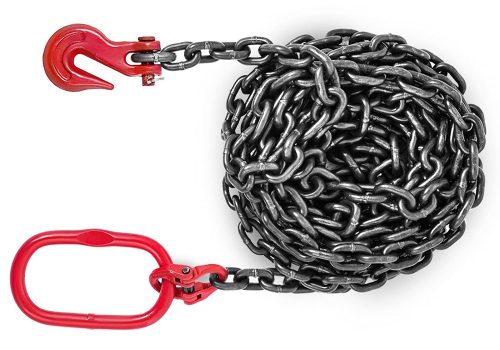Apex Lifting
How Temperature and Environment Affect Chain Sling Performance

Have you ever wondered why chain slings sometimes fail earlier than expected even if they look strong? The answer often lies in the temperature and environment in which they are used. Just like people feel the difference when working in extreme heat or freezing cold, chain slings also react to the conditions around them. Understanding how temperature and environment affect chain sling performance is the first step toward making sure they remain safe, reliable, and long-lasting.
Why Chain Sling Performance Depends on Conditions
Chain slings are built to lift heavy loads, but they are not indestructible. Their strength and durability can be reduced when exposed to extreme conditions. Heat, cold, moisture, chemicals, and even how they are stored can change how well a chain sling performs. Knowing these factors helps riggers and operators make safer choices and prevent accidents at the worksite.
High Temperature Effects on Chain Slings
When chain slings are exposed to very high temperatures, the metal can lose strength. Heat changes the structure of the steel, making it softer and less capable of handling the same loads it could manage at normal temperatures. For example, slings used near furnaces, welding areas, or hot machinery are more likely to weaken if they are not rated for high-heat use. The safe approach is to always check the manufacturer’s guidelines for maximum operating temperature. Using protective covers or specialized slings designed for high heat can also keep them safe.
Cold Temperature Effects on Chain Slings
Cold weather has the opposite effect on chain slings. Instead of softening, the steel becomes more brittle in extremely low temperatures. This means the sling is more likely to crack or break under pressure. Outdoor projects during winter or jobs in refrigerated storage areas are common examples where chain slings are exposed to freezing conditions. To stay safe, operators should use slings designed for low-temperature environments and inspect them more frequently for cracks or unusual wear.
Moisture and Corrosion
Moisture is another enemy of chain sling performance. If a chain sling is often exposed to rain, seawater, or humid conditions, rust and corrosion can set in. Rust eats away at the metal, reducing the sling’s strength over time even if it still looks usable. In industries like shipping, marine construction, or oil and gas, this is a major concern. To prevent this, slings should be cleaned and dried after use and stored in a dry place. Some operators also use anti-corrosion coatings or stainless-steel slings in highly humid or marine environments.
Chemical Exposure and Chain Slings
Chemicals can be just as harmful as extreme temperatures. Certain acids, solvents, or cleaning solutions can weaken the steel or cause surface damage. For example, if a chain sling is used in a chemical plant without proper protection, it may lose its strength much faster than expected. The solution here is simple: know what chemicals are present in the work environment and choose slings made from materials resistant to those chemicals. Always wash and clean slings that may have come in contact with harmful substances.
The Role of Storage and Handling
Even when not in use, the environment matters. Storing chain slings in damp, dusty, or open areas can cause unnecessary wear. A poorly stored sling can get damaged just by lying around. Safe storage includes keeping them in a dry, clean, and well-ventilated place. Using racks, hooks, or sling cabinets helps prevent them from tangling and reduces accidental damage.
Regular Inspections in Harsh Environments
No matter the conditions, regular inspection is key. In environments with high heat, freezing cold, moisture, or chemicals, slings should be inspected more often. Look for cracks, rust, bends, or any changes in the surface. If something doesn’t look right, the sling should be removed from service immediately. This proactive approach can prevent accidents and injuries before they happen.
Training Workers for Safe Use
Sometimes the biggest risk isn’t the environment but the lack of awareness among workers. If operators do not know how temperature or environment affects chain slings, they might continue using them even when unsafe. Training workers to understand the limits of chain slings, recognize signs of wear, and follow safety checklists is one of the best ways to ensure safe lifting.
Conclusion
Chain slings are powerful lifting tools, but like all equipment, they have limits. Heat can soften them, cold can make them brittle, moisture can corrode them, and chemicals can weaken their strength. By understanding how temperature and environment affect chain sling performance, riggers and operators can take smarter steps to protect them. Using the right type of sling for the environment, storing them properly, inspecting them regularly, and training workers all add up to safer and more efficient lifting operations. In the end, a little extra care goes a long way in keeping both the tools and the people who use them safe.
by Apex Lifting on 2025-08-25 03:26:18
No comments yet.